#Python conditional statements
Explore tagged Tumblr posts
Text
Getting Started with Python: A Beginner's Guide (pt 2)
They say teaching is the best way to learn. Consider subscribing to the website!
Expanding Your Knowledge: Collections and Control Flow In Part 1 of our beginner’s guide to Python, we covered the basics of variables, data types, and conditional statements. Now, let’s dive deeper into collections like lists, tuples, and dictionaries, as well as control flow mechanisms such as loops and functions. Lists: More Than Just Arrays As mentioned earlier, a list is a collection of…
#Beginner#Coding#Dictionaries#Functions#Getting started with Python#Introduction to Python programming#Learn Python#Lists#Loops#Programming#Python#Python basics#Python conditional statements#Python control structures#Python data types#Python for beginners#Python operators#Python variables#Tuples
0 notes
Text
Day-3: Mastering Control Flow and Logical Operators in Python
Python Boot Camp - 2023
Python is a versatile and widely used programming language known for its simplicity and readability. One of the fundamental aspects of programming is controlling the flow of execution based on certain conditions. Python provides various control flow statements and logical operators that allow programmers to make decisions and perform actions accordingly. 1. Introduction to Control Flow in…

View On WordPress
#Nested control flow Python#Python and operato#Python code execution#Python coding tips#Python conditional statements#Python control flow#Python decision-making#Python elif statement#Python else statement#Python for loop#Python if statement#Python logical operators#Python looping and control flow#Python not operator#Python or operator#Python programming best practices#Python programming guide#Python programming techniques#Python while loop#Ternary operator Python
0 notes
Text
2 notes
·
View notes
Text
We learned how to program with Python using conditional statements.Using the if statements, if-else assertions, nested if statements, and ternary operators, you can write dynamic, flexible, and logical code
0 notes
Text
Conditional Construct In Python
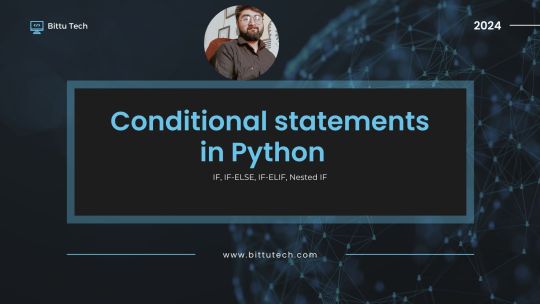
View On WordPress
#conditional statement#conditional statement in python#if statement#if-elif statement in python#if-else statement in python#nested if statement in python
0 notes
Text
Python for Beginners: Launch Your Tech Career with Coding Skills
Are you ready to launch your tech career but don’t know where to start? Learning Python is one of the best ways to break into the world of technology—even if you have zero coding experience.
In this guide, we’ll explore how Python for beginners can be your gateway to a rewarding career in software development, data science, automation, and more.
Why Python Is the Perfect Language for Beginners
Python has become the go-to programming language for beginners and professionals alike—and for good reason:
Simple syntax: Python reads like plain English, making it easy to learn.
High demand: Industries spanning the spectrum are actively seeking Python developers to fuel their technological advancements.
Versatile applications: Python's versatility shines as it powers everything from crafting websites to driving artificial intelligence and dissecting data.
Whether you want to become a software developer, data analyst, or AI engineer, Python lays the foundation.
What Can You Do With Python?
Python is not just a beginner language—it’s a career-building tool. Here are just a few career paths where Python is essential:
Web Development: Frameworks like Django and Flask make it easy to build powerful web applications. You can even enroll in a Python Course in Kochi to gain hands-on experience with real-world web projects.
Data Science & Analytics: For professionals tackling data analysis and visualization, the Python ecosystem, featuring powerhouses like Pandas, NumPy, and Matplotlib, sets the benchmark.
Machine Learning & AI: Spearheading advancements in artificial intelligence development, Python boasts powerful tools such as TensorFlow and scikit-learn.
Automation & Scripting: Simple yet effective Python scripts offer a pathway to amplified efficiency by automating routine workflows.
Cybersecurity & Networking: The application of Python is expanding into crucial domains such as ethical hacking, penetration testing, and the automation of network processes.
How to Get Started with Python
Starting your Python journey doesn't require a computer science degree. Success hinges on a focused commitment combined with a thoughtfully structured educational approach.
Step 1: Install Python
Download and install Python from python.org. It's free and available for all platforms.
Step 2: Choose an IDE
Use beginner-friendly tools like Thonny, PyCharm, or VS Code to write your code.
Step 3: Learn the Basics
Focus on:
Variables and data types
Conditional statements
Loops
Functions
Lists and dictionaries
If you prefer guided learning, a reputable Python Institute in Kochi can offer structured programs and mentorship to help you grasp core concepts efficiently.
Step 4: Build Projects
Learning by doing is key. Start small:
Build a calculator
Automate file organization
Create a to-do list app
As your skills grow, you can tackle more complex projects like data dashboards or web apps.
How Python Skills Can Boost Your Career
Adding Python to your resume instantly opens up new opportunities. Here's how it helps:
Higher employability: Python is one of the top 3 most in-demand programming languages.
Better salaries: Python developers earn competitive salaries across the globe.
Remote job opportunities: Many Python-related jobs are available remotely, offering flexibility.
Even if you're not aiming to be a full-time developer, Python skills can enhance careers in marketing, finance, research, and product management.
If you're serious about starting a career in tech, learning Python is the smartest first step you can take. It’s beginner-friendly, powerful, and widely used across industries.
Whether you're a student, job switcher, or just curious about programming, Python for beginners can unlock countless career opportunities. Invest time in learning today—and start building the future you want in tech.
Globally recognized as a premier educational hub, DataMites Institute delivers in-depth training programs across the pivotal fields of data science, artificial intelligence, and machine learning. They provide expert-led courses designed for both beginners and professionals aiming to boost their careers.
Python Modules Explained - Different Types and Functions - Python Tutorial
youtube
#python course#python training#python#learnpython#pythoncourseinindia#pythoncourseinkochi#pythoninstitute#python for data science#Youtube
3 notes
·
View notes
Text
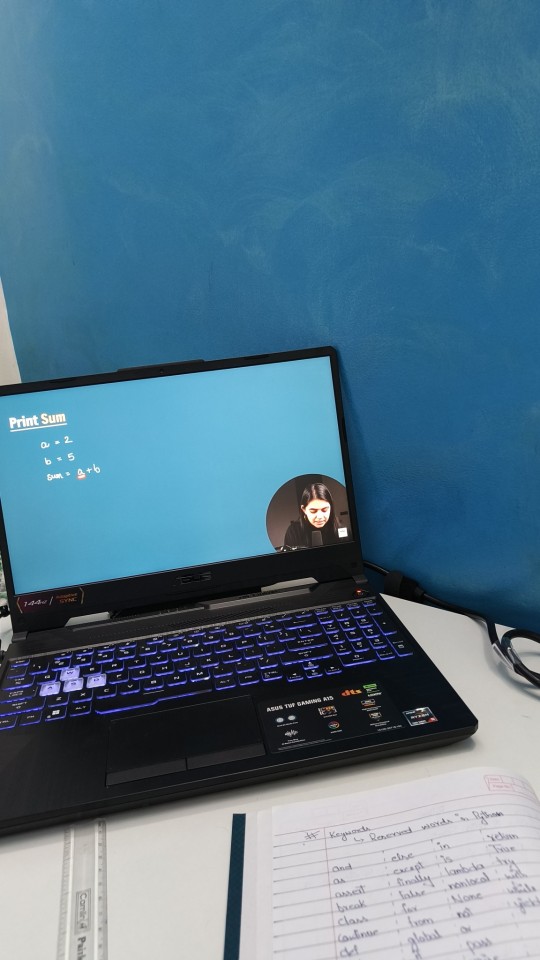

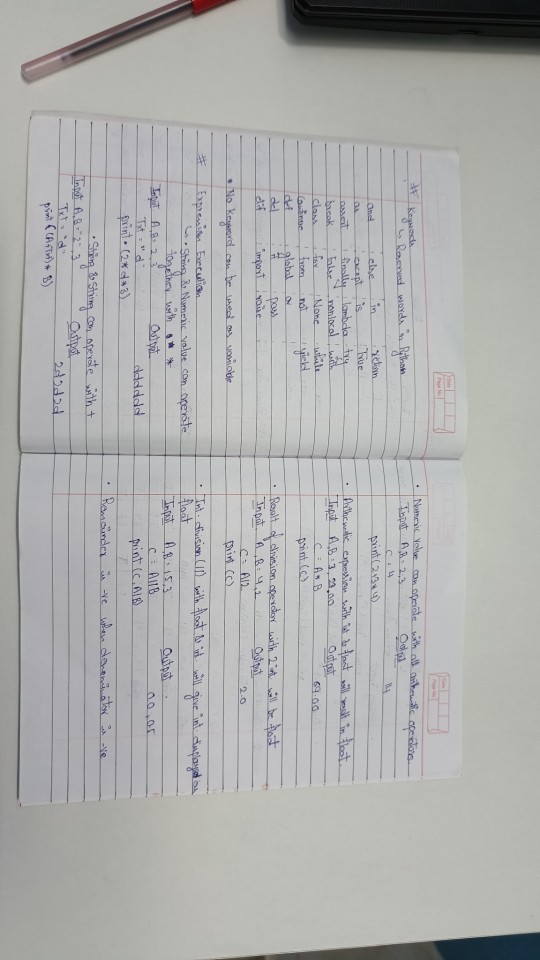


So I studied the basics about Python today, what are variables and the rules about it, what are data types and what are the different kinds of inputs, learned a lot about the conditional statements and I still have to work on my syntax because it kept throwing errors whenever I ran a conditional statement. In all had a great Day 1, looking forward to tomorrow and lesseee what happens.
18 notes
·
View notes
Text
Python Programming Language: A Comprehensive Guide
Python is one of the maximum widely used and hastily growing programming languages within the world. Known for its simplicity, versatility, and great ecosystem, Python has become the cross-to desire for beginners, professionals, and organizations across industries.
What is Python used for

🐍 What is Python?
Python is a excessive-stage, interpreted, fashionable-purpose programming language. The language emphasizes clarity, concise syntax, and code simplicity, making it an excellent device for the whole lot from web development to synthetic intelligence.
Its syntax is designed to be readable and easy, regularly described as being near the English language. This ease of information has led Python to be adopted no longer simplest through programmers but also by way of scientists, mathematicians, and analysts who may not have a formal heritage in software engineering.
📜 Brief History of Python
Late Nineteen Eighties: Guido van Rossum starts work on Python as a hobby task.
1991: Python zero.9.0 is released, presenting classes, functions, and exception managing.
2000: Python 2.Zero is launched, introducing capabilities like list comprehensions and rubbish collection.
2008: Python 3.Zero is launched with considerable upgrades but breaks backward compatibility.
2024: Python three.12 is the modern day strong model, enhancing performance and typing support.
⭐ Key Features of Python
Easy to Learn and Use:
Python's syntax is simple and similar to English, making it a high-quality first programming language.
Interpreted Language:
Python isn't always compiled into device code; it's far done line by using line the usage of an interpreter, which makes debugging less complicated.
Cross-Platform:
Python code runs on Windows, macOS, Linux, and even cell devices and embedded structures.
Dynamic Typing:
Variables don’t require explicit type declarations; types are decided at runtime.
Object-Oriented and Functional:
Python helps each item-orientated programming (OOP) and practical programming paradigms.
Extensive Standard Library:
Python includes a rich set of built-in modules for string operations, report I/O, databases, networking, and more.
Huge Ecosystem of Libraries:
From data technological know-how to net development, Python's atmosphere consists of thousands of programs like NumPy, pandas, TensorFlow, Flask, Django, and many greater.
📌 Basic Python Syntax
Here's an instance of a easy Python program:
python
Copy
Edit
def greet(call):
print(f"Hello, call!")
greet("Alice")
Output:
Copy
Edit
Hello, Alice!
Key Syntax Elements:
Indentation is used to define blocks (no curly braces like in different languages).
Variables are declared via task: x = 5
Comments use #:
# This is a remark
Print Function:
print("Hello")
📊 Python Data Types
Python has several built-in data kinds:
Numeric: int, go with the flow, complicated
Text: str
Boolean: bool (True, False)
Sequence: listing, tuple, range
Mapping: dict
Set Types: set, frozenset
Example:
python
Copy
Edit
age = 25 # int
name = "John" # str
top = 5.Nine # drift
is_student = True # bool
colors = ["red", "green", "blue"] # listing
🔁 Control Structures
Conditional Statements:
python
Copy
Edit
if age > 18:
print("Adult")
elif age == 18:
print("Just became an person")
else:
print("Minor")
Loops:
python
Copy
Edit
for color in hues:
print(coloration)
while age < 30:
age += 1
🔧 Functions and Modules
Defining a Function:
python
Copy
Edit
def upload(a, b):
return a + b
Importing a Module:
python
Copy
Edit
import math
print(math.Sqrt(sixteen)) # Output: four.0
🗂️ Object-Oriented Programming (OOP)
Python supports OOP functions such as lessons, inheritance, and encapsulation.
Python
Copy
Edit
elegance Animal:
def __init__(self, call):
self.Call = name
def communicate(self):
print(f"self.Call makes a valid")
dog = Animal("Dog")
dog.Speak() # Output: Dog makes a legitimate
🧠 Applications of Python
Python is used in nearly each area of era:
1. Web Development
Frameworks like Django, Flask, and FastAPI make Python fantastic for building scalable web programs.
2. Data Science & Analytics
Libraries like pandas, NumPy, and Matplotlib permit for data manipulation, evaluation, and visualization.
Three. Machine Learning & AI
Python is the dominant language for AI, way to TensorFlow, PyTorch, scikit-research, and Keras.
4. Automation & Scripting
Python is extensively used for automating tasks like file managing, device tracking, and data scraping.
Five. Game Development
Frameworks like Pygame allow builders to build simple 2D games.
6. Desktop Applications
With libraries like Tkinter and PyQt, Python may be used to create cross-platform computing device apps.
7. Cybersecurity
Python is often used to write security equipment, penetration trying out scripts, and make the most development.
📚 Popular Python Libraries
NumPy: Numerical computing
pandas: Data analysis
Matplotlib / Seaborn: Visualization
scikit-study: Machine mastering
BeautifulSoup / Scrapy: Web scraping
Flask / Django: Web frameworks
OpenCV: Image processing
PyTorch / TensorFlow: Deep mastering
SQLAlchemy: Database ORM
💻 Python Tools and IDEs
Popular environments and tools for writing Python code encompass:
PyCharm: Full-featured Python IDE.
VS Code: Lightweight and extensible editor.
Jupyter Notebook: Interactive environment for statistics technological know-how and studies.
IDLE: Python’s default editor.
🔐 Strengths of Python
Easy to study and write
Large community and wealthy documentation
Extensive 0.33-birthday celebration libraries
Strong support for clinical computing and AI
Cross-platform compatibility
⚠️ Limitations of Python
Slower than compiled languages like C/C++
Not perfect for mobile app improvement
High memory usage in massive-scale packages
GIL (Global Interpreter Lock) restricts genuine multithreading in CPython
🧭 Learning Path for Python Beginners
Learn variables, facts types, and control glide.
Practice features and loops.
Understand modules and report coping with.
Explore OOP concepts.
Work on small initiatives (e.G., calculator, to-do app).
Dive into unique areas like statistics technological know-how, automation, or web development.
#What is Python used for#college students learn python#online course python#offline python course institute#python jobs in information technology
2 notes
·
View notes
Text
There is no need for the 'elif' keyword
I've been working on my parser for a little bit now, and I'm stealing following along this amazing article to implement a Pratt Parser. I've written a grammar for my own little language as well, inspired by Python's own grammar.
Inspired by Rust, if-statements are considered expressions. So you can use them like
foo = 1 + if 1 > 0 {1} else {0};
and it would have no problem handling that. However, like in Python, my if-statements use the 'elif' keyword to differentiate between else-if and else-statements.
However, as I'm writing my Pratt Parser, I've come to realize that there is no need for the 'elif' keyword to exist. If you write your grammar something like
expression:
| ...
| if_stmt
if_stmt:
| 'if' expression block else_stmt
| 'if' expression block
else_stmt:
| 'else' expression
it will have no problem handling else-if statements since if-statements are also expressions.
Else-statements do not have to enforce blocks since they do not have a condition body, unlike if-statements. If-statements must enforce blocks since if they didn't, the parser wouldn't know when the condition body ends and the main body started.
For a language like Python however, it uses the 'elif' keyword because it does not treat if-statements as expressions. However, they do have ternaries
A if condition else B
which look very similar to if-statements. These are treated as expressions. Because they're treated as expressions, you don't see the 'elif' keyword. Instead, nested ternaries look like
A if condition else B if condition else C
You might notice that it looks similar to
if condition {
A
} else if condition {
B
}
but just rearranged. You can also notice the 'else if'. The 'elif' keyword has been eliminated.
I didn't put much planning into this post so it probably sounds a little rambly but whatever. cheers.
28 notes
·
View notes
Note
hi. i had a very similar experince to trying to look through the code camp scams and everything online and not living near anything useful. if you can find an online real college thats what i did, granted its a community college and an associates but. other than that, don't sleep on utilizing chatgpt to teach you. thats how i learn all of my material. you can ask it questions or say "can you teach me about x", and if you dont like its response you can say things like "make that more simple" or "make that interactive". but helpful tip, all programming languages basically do the same things and work in very, very similar ways. if you just learn the fundamentals of programming you can just translate that to any language. in my opinion, the basics to learn are: the structures of programming (sequential, conditional, iterative), variables, datatypes (integer, string, float, etc)(in python those are it), conditional statements(these are those if-else things you see), iterative aka loops(do..while, for x in list, do until, etc), functions(keep em one purpose), passing data. i would say these are the fundamentals. every language does it (besides html bc thats not a programming language but just a mark up language), so once you know about the conditonal structure for example, just find out "how do i use this in x language". if you are learning python now, its a great language to learn about programming and you've probably realized by now that people most often use it in an object oriented way, but you don't have to and don't have to learn about classes or objects if you don't have the fundamentals down yet. i hope this helps and if you have any questions feel free to ask me

Oh I 100% agree with this advice. After looking for a long, long time, I realised the most legitimate courses were from 'real' colleges and education suppliers that offered 'brick n mortar' schooling as well as e-learning.
I'm definitely going to utilise the free resources online and then work towards building a profile and generally seeing what the jobs online look for and work towards that alongside the usual path of learning :)
Also, I love how supportive folk generally are in this area of learning. I knew it would be competitive, especially when it comes to getting a job in a year or so...but seeing folk lift each other up instead of put each other down is heart-warming on so many levels. It makes me think I've found my correct career path :)
#codeblr#supportive#thank you#advice#solid advice#good advice#lovely ask#thank you friend!#I love codeblr#programming#learning to code#learning programming#python#web development#coding
24 notes
·
View notes
Text
Getting Started with Python: A Beginner's Guide (pt 1)
I was inspired to pursue mastery or expertise in the tech field like coding and development, and to do so there must be a foundation. Here is my beginning.. - I welcome the conversation.
Understanding Variables I was inspired to pursue expertise in the tech field, like coding and development. To achieve this, there must be a foundation. Here is my beginning. I welcome the conversation. In Python, a variable is a container for storing a value. You can assign a value to a variable using the “=” operator. The value can be of any data type, such as a string, integer, or…
#Getting started with Python#Introduction to Python programming#Learn Python#Python basics#Python conditional statements#Python control structures#Python data types#Python for beginners#Python operators#Python variables
0 notes
Text

Python is a widely used programming language that offers several unique features and advantages compared to languages like Java and C++. Our Python tutorial thoroughly explains Python basics and advanced concepts, starting with installation, conditional statements, loops, built-in data structures, Object-Oriented Programming, Generators, Exception Handling, Python RegEx, and many other concepts. This tutorial is designed for beginners and working professionals.
2 notes
·
View notes
Text
Iterations - for loop
Iteration, aka repeating, is a solution for tasks that need to be done over and over again.
Instead of writing dozens of lines of code for the same purpose, we can simplify it and shorten it to just a couple of lines. This way the code is both easier to read for the other programmers (fellow people hehe) and faster to process for the computer.
Also, simpler code reduces errors rate.
Examples of iterations are loops.
Looping means repeating something until a particular condition is satisfied.
Python has 3 Basic Loops:
For Loop - used when we know number of iterations (repetitions) in advance.
While Loop - for situations where the number of iterations is unknown beforehand.
Nested Loop - using one looping statement inside another looping statement.
For loop is used to execute the same instruction over and over again, a specific number of times.
for i in range(5): print(“Hello!”) Output: Hello! Hello! Hello! Hello! Hello!
In the first line, we declared how many repetitions are needed. In the second line, we wrote what should be repeated a given number of times. In this case, we asked Python to print the string “Hello!” 5 times.
Basic structure of the for loop:
for i in range(5): print(“Hello!”)
for - a keyword that signals that “for loop” is starting.
i - internal variable name which is keeping the counter value. Stands for “iteration”. We can read the whole line as “for 5 iterations/repetitions, please do the following:” For every loop, the 'i' variable increases by 1 because it's the counter. 'i' doesn't have to be 'i', we can switch it to another letter or another word, that are python approved for this (for example, you can’t use name of defined function instead of 'i').
#Loop using "unicorn" as internal variable, instead of "i" for unicorn in range(10): print(unicorn) #still works!
in range() - represents the list of numbers we are looping through (number of time the iteration is running). Python starts the counter from 0. It means that range(5) - will give a sequence of 5 numbers: 0, 1, 2, 3, 4 range() function has 3 parameters(start, end, steps), default values for start is 0 and step is 1. When we write range(5), we only give one parameter, and the function still works, because Python reads it as range(0,5,1) and the sequence starts with 0, increases by 5 counts, with step between each number being 1, by default.
We can change the parameters: range(1,20,3) this would result in iterations that starts from 1, goes up by 3 steps with the upper limit of 20: 1, 4,7,10,13,16,19.
Example: #print every 2 numbers (evens): for i in range (2, 10, 2): print(x) output: 2 4 6 8 (!) output does not include 10 because 10 is the upper limit (result only includes number under 10)
: adding a colon sign in the end of the first line is mandatory, otherwise an error will occur. Finally in the next line, we start writing the instruction, that is supposed to be repeated. This part isn’t starting right away, it should be indented. Indentation is the blank gap at the beginning of lines. Normal indentation is 4 spaces/tab long. Python would recognize 2 spaces or 4 spaces as an indentation, but 4 spaces length is more agreed upon and is used more wildly.
tip: How to write an instruction to get output of a list that starts from 1 instead of 0, accompanied by a string:
for i in range(10): print(i+1, "I love you")
4 notes
·
View notes
Text
How to Learn Programming?
Learning to code can be a rewarding and empowering journey. Here are some steps to help you get started:
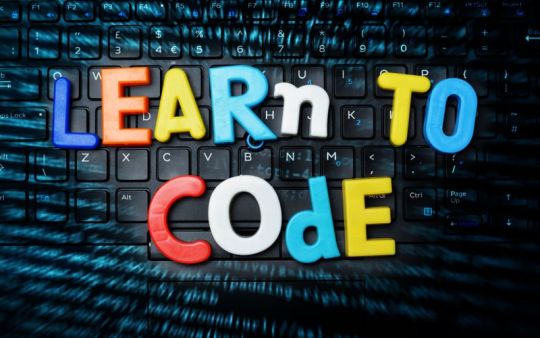
Define Your Purpose:
Understand why you want to learn to code. Whether it's for a career change, personal projects, or just for fun, having a clear goal will guide your learning path.
Choose a Programming Language:
Select a language based on your goals. For beginners, languages like Python, JavaScript, or Ruby are often recommended due to their readability and versatility.
Start with the Basics:
Familiarize yourself with fundamental concepts such as variables, data types, loops, and conditional statements. Online platforms like Codecademy, Khan Academy, or freeCodeCamp offer interactive lessons.
Practice Regularly:
Coding is a skill that improves with practice. Set aside dedicated time each day or week to code and reinforce what you've learned.
Build Simple Projects:
Apply your knowledge by working on small projects. This helps you gain hands-on experience and keeps you motivated.
Read Code:
Study existing code, whether it's open-source projects or examples in documentation. This helps you understand different coding styles and best practices.
Ask for Help:
Don't hesitate to ask questions on forums like Stack Overflow or Reddit when you encounter difficulties. Learning from others and getting feedback is crucial.
Join Coding Communities:
Engage with the coding community to stay motivated and learn from others. Platforms like GitHub, Stack Overflow, and coding forums provide opportunities to connect with fellow learners and experienced developers.
Explore Specializations:
As you gain more experience, explore different areas like web development, data science, machine learning, or mobile app development. Specializing can open up more opportunities and align with your interests.
Read Documentation:
Learn to navigate documentation for programming languages and libraries. It's a crucial skill for developers, as it helps you understand how to use different tools and resources effectively.
Stay Updated:
The tech industry evolves rapidly. Follow coding blogs, subscribe to newsletters, and stay informed about new developments and best practices.
Build a Portfolio:
Showcase your projects on platforms like GitHub to create a portfolio. It demonstrates your skills to potential employers or collaborators.
Remember, learning to code is a continuous process, and it's okay to face challenges along the way. Stay persistent, break down complex problems, and celebrate small victories.
7 notes
·
View notes
Text
Checking for Edges
If we're checking for the edges of our board, and we want a fairly general statement to allow for variable board sizes (though still assuming a rectangle) and variable ship sizes, what are we looking at?
Let's look at handling East for guidance.
East from a coordinate should be (+X,+0) from where you are. If you're at (1,1) the space directly East would be (2,1).
So if the board width is 18, and ship length is 3, having a ship that randomly decides to point East starting from your randomly chosen coordinate of (15,3) should be fine. It should go (15,3) -> (16,3) -> (17,3) and all of that fits. Meanwhile if it starts from (17,9) it should not be allowed. That goes off the edge of the board.
For North, South, East, and West, we're given four distinct coordinate-shift values: (+0,-J), (+0,+J), (-J,+0), and (+J,+0). We can check the values against the minimums and maximums of the board, like, if x + x_shift * (ship_size-1) < 0 or \ x + x_shift * (ship_size-1) > board.width or \ y + y_shift * (ship_size-1) < 0 or \ y + y_shift * (ship_size-1) > board.height: return False else: return True
Edit: If you're in Python and you want to put a long-ass if statement like this on multiple lines, you need to do something to tell the computer that the end of the line isn't the end of the statement, because Python uses newline to mean end-of-statement by default. You can do this, with the \ character indicating "new line doesn't mean new statement," or you could do parentheses like if ( x + x_shift * (ship_size-1) < ... ...or y + y_shift * (ship_size-1) > board.height): I like the slashes-at-end because it makes it easy to line the conditional statements up all pretty-like.
because the X and Y values themselves are negative for North and West (North throws people; In math, positive values go UP on the graph, but computers start doing things from the top left of the screen so higher numbers move you farther DOWN the screen), the "x-shift" value of a 4-point ship pointed West should be x + (-1)*(3) So if x is 3 or greater, it returns True.
4 notes
·
View notes
Text
How much Python should one learn before beginning machine learning?
Before diving into machine learning, a solid understanding of Python is essential. :
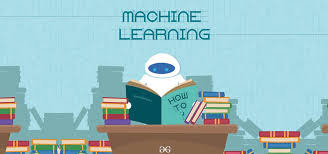
Basic Python Knowledge:
Syntax and Data Types:
Understand Python syntax, basic data types (strings, integers, floats), and operations.
Control Structures:
Learn how to use conditionals (if statements), loops (for and while), and list comprehensions.
Data Handling Libraries:
Pandas:
Familiarize yourself with Pandas for data manipulation and analysis. Learn how to handle DataFrames, series, and perform data cleaning and transformations.
NumPy:
Understand NumPy for numerical operations, working with arrays, and performing mathematical computations.
Data Visualization:
Matplotlib and Seaborn:
Learn basic plotting with Matplotlib and Seaborn for visualizing data and understanding trends and distributions.
Basic Programming Concepts:
Functions:
Know how to define and use functions to create reusable code.
File Handling:
Learn how to read from and write to files, which is important for handling datasets.
Basic Statistics:
Descriptive Statistics:
Understand mean, median, mode, standard deviation, and other basic statistical concepts.
Probability:
Basic knowledge of probability is useful for understanding concepts like distributions and statistical tests.
Libraries for Machine Learning:
Scikit-learn:
Get familiar with Scikit-learn for basic machine learning tasks like classification, regression, and clustering. Understand how to use it for training models, evaluating performance, and making predictions.
Hands-on Practice:
Projects:
Work on small projects or Kaggle competitions to apply your Python skills in practical scenarios. This helps in understanding how to preprocess data, train models, and interpret results.
In summary, a good grasp of Python basics, data handling, and basic statistics will prepare you well for starting with machine learning. Hands-on practice with machine learning libraries and projects will further solidify your skills.
To learn more drop the message…!
2 notes
·
View notes